الحساب الذهني السريع
المنهج
تم تصميم منهج Speed Math بعناية لتسليط الضوء على اهمية العمليات الحسابية الذهنية, وتعزيز الكفاءة في حل المشكلات الرياضية عقلياً. فهو يشتمل على منهجيات مختلفة مثل تقنيات السوروبون و الاختصارات العقلية, مما يتيح إجراء عمليات حسابية سريعة دون الحاجة الى الآلات الحاسبة اة الأساليب المكتوبة.
الهدف الأساسي من هذا المنهج هو تحسين كفاءة الطلاب في أداء العمليات الحسابية، بما في ذلك الجمع والطرح والضرب والقسمة، والعمليات الحسابية الأكثر تعقيدًا، مع البراعة باستخدام القدرات العقلية. وبعيدًا عن مجرد الحساب، يهدف المنهج إلى تنمية حس رقمي قوي، وتعزيز تنشيط الذاكرة، وصقل مهارات حل المشكلات، وتعزيز خفة الحركة العقلية لدى الطلاب.
أحد الجوانب البارزة في هذا المنهج هو قدرته على استيعاب أساليب التعلم المختلفة.
و من خلال دمج الأنشطة الحماسية و المعلومات المهمة و الألعاب التفاعلية و التمارين المساعدة للتركيز, تصبح تجربة التعلم سعياً ممتعاً, و في نفس الوقت تعمل على تحسين قدرات الرياضيات الذهنية. في جوهره, يهدف منهج Speed Math إلى تزويد المتعلمين بمهارات عملية و قابلة للتطبيق في العالم الحقيقي. و من خلال تمكينهم من مواجهة التحديات الرياضية بمهارة و ثقة, فإن هدفها الشامل هو تعزيز ثقتهم و كفاءتهم في هذا المجال.
أهمية وتفرد منهج الحسابات الذهنية السريعة
تم تصميم برنامج Speed Math لتعزيز مهارات الحسابات الذهنية و توسيع نطاق الفهم من خلال نهج إبداعي و جذاب
يتضمن مواضيع مختلفة, مثل ربط خرزات العد بالفواكه لتعلم الأرقام و استخدام تصنيف سرعة الحيوانات لتشجيع الحسابات الذهنية السريعة.
و يستكشف البرنامج ١٢ مستوى تشمل النقل و الرياضة و الموسيقى و الجوانب الثقافية للأرقام و جسم الإنسان و استكشاف الفضاء, إلى جانب الألعاب الذكية و الكيمياء و المخترعين و الذكاء الاصطناعي و غيرها
من خلال دمج المسائل الحسابية مع هذه المواضيع المثيرة للاهتمام, لا يقوم البرنامج بتسريع قدرات الرياضيات الذهنية فحسب, بل يثري المعرفة الشاملة أيضاً. هذا المزيج المبتكر من الرياضيات و المواضيع المبهرة لا يسرع العمليات الحسابية العقلية فحسب, بل يجعل تجربة التعلم أكثر إثارة للاهتمام و غامرة.
المستوى ١ KAZOERU (الفواكه) – (روضة ثانية – مستوى البداية)
The integration of mental math with fruits involves applying calculations to understand sizes, seasons, and cultivation.
It combines practical knowledge with analytical skills, ensuring a comprehensive grasp of fruit characteristics and numerical aspects.
This approach enhances the understanding of fruit farming.
يستطيع الطالب إنجاز ما يلي
- Recognizing and naming 16 different fruits, ranging from small to big, fostering early familiarity with diverse fruit types.
- Participating in simple and fun cooking activities, introducing basic concepts of preparing desserts with fruits, promoting sensory learning.
- Discovering the concept of seasons related to each fruit, in a playful and visual manner, laying the foundation for understanding the natural world.
- Engaging in interactive games tailored for their age, making the learning of fruit sizes, seasons, and basic culinary skills enjoyable and age-appropriate.
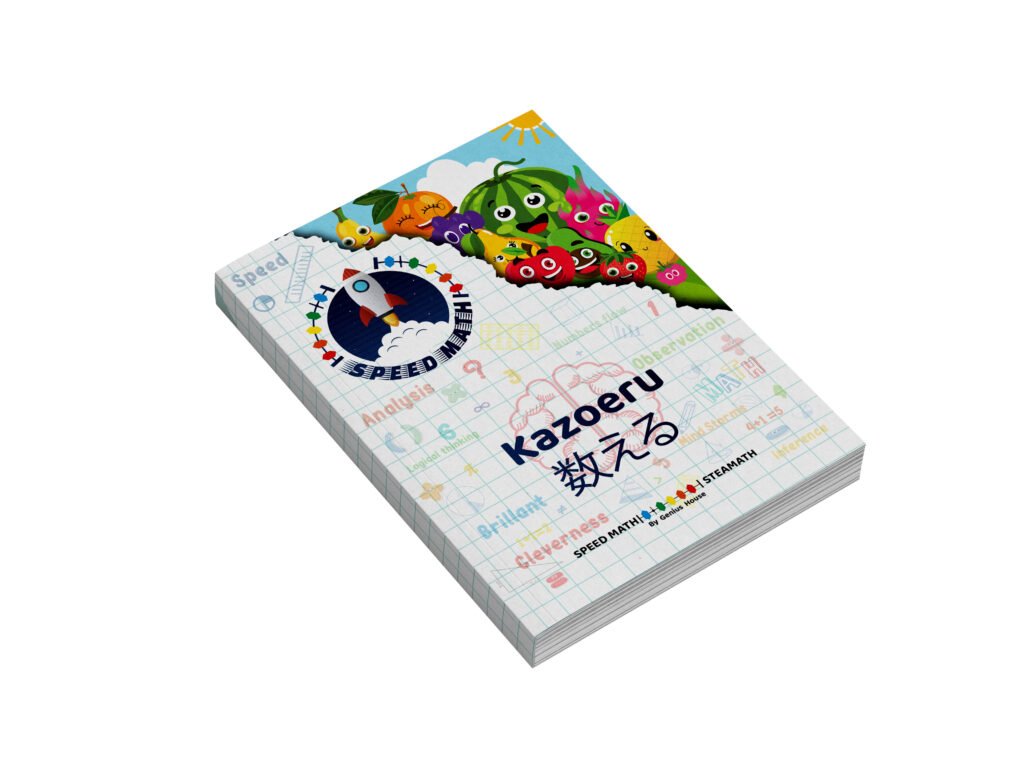
المستوى ٢ SUPĪDO I (الحيوانات) – (روضة ثالثة – مستوى البداية)
يتضمن التعاون بين الحسابات الذهنية ودراسة الحيوانات استخدام المهارات الرياضية لاستكشاف جوانب مثل عادات التغذية والبلدان التي نشأت منها.
يتيح هذا التآزر فهمًا أكثر ثاقبة للأنماط والعلاقات المعقدة داخل العالم الطبيعي، مما يعزز قدرتنا على فهم السلوكيات الحيوانية المتنوعة والتعامل معها.
يستطيع الطالب إنجاز ما يلي
- The student can accomplish the following:
- Understand the various sizes of animals.
- Determine and compare the speeds of different animals, categorizing them from slower to faster, utilizing speed as a comparative metric.
- Identify the habitats of different animals, learning where each species lives.
- Gain knowledge about the dietary preferences and habits of various animals, understanding what they eat.
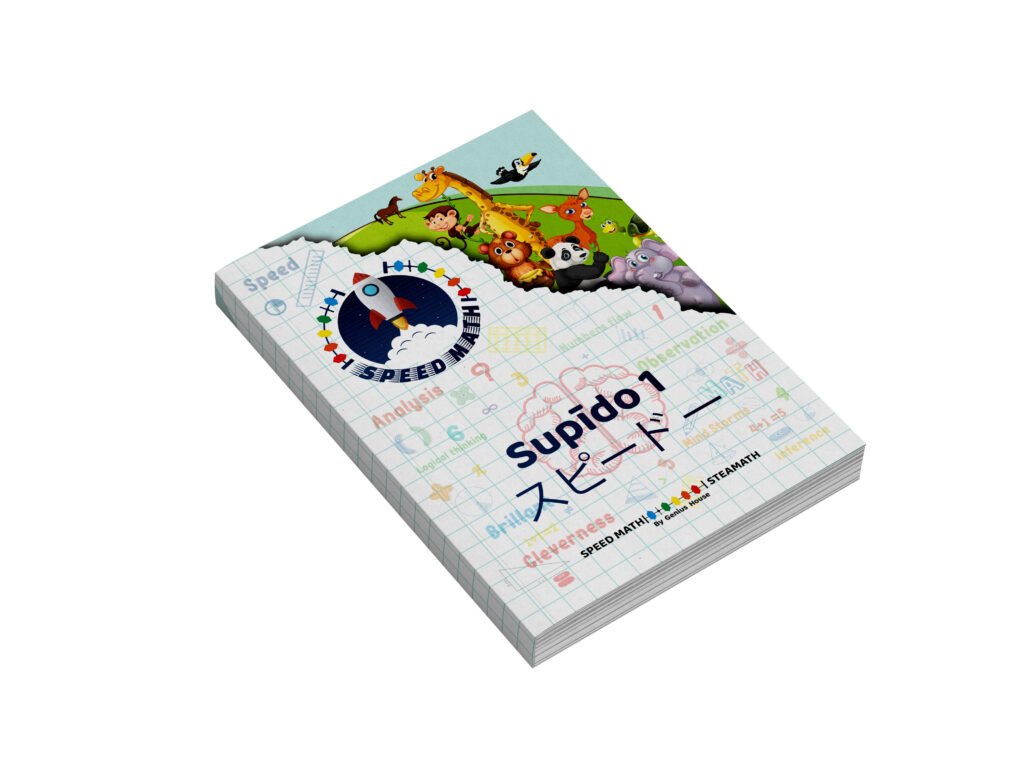
المستوى ٣ SUPĪDO II (وسائل النقل) – (الصف الأول – مستوى البداية)
The collaboration between mental math and the study of transportation integrates mathematical skills for efficient analysis and optimization of transport systems. Applying mental math enables quick calculations of distances, time, and resource allocation, facilitating improved decision-making in transportation logistics.
يعزز هذا التآزر التطبيق العملي للمبادئ الرياضية في مواجهة تحديات العالم الحقيقي في هذا المجال
يستطيع الطالب إنجاز ما يلي
- Identify 16 different types of transportation, ranging from slow to fast, such as cars, bicycles, and airplanes.
- Determine the speed of each transportation mode, understanding how fast they can move people or goods.
- Discover who was the first to use each mode of transportation, uncovering historical pioneers and innovators.
- Understand the importance of each transportation method, exploring how they contribute to connectivity and efficiency.

المستوى ٤ YŪNŌ I (الرياضة) (الصف الثالث – مستوى البداية)
يتضمن التعاون بين الحسابات الذهنية والرياضة دمج مهارات الرياضيات مع الأنشطة البدنية. ويشير إلى استخدام الحسابات الذهنية والتفكير الاستراتيجي في الرياضة لتعزيز الأداء. تهدف هذه الشراكة إلى تحسين عملية إتخاذ القرارات، وتحليل إحصائيات اللعبة، وتحسين النتائج الرياضية الشاملة من خلال تطبيق المبادئ الرياضية على مختلف جوانب الرياضة.
يستطيع الطالب إنجاز ما يلي
- The student can accomplish learning various types of sports, starting from the slowest-paced ones to the fastest.
- يمكنهم اكتساب المعرفة حول القياس والسرعة في سياق الرياضات المختلفة
- استكشاف الأصول التاريخية للبلدان المرتبطة بالرياضات المختلفة، مما يوفر فهمًا ثقافيًا أوسع.
- فهم ديناميكيات الفريق من خلال معرفة عدد اللاعبين المطلوبين لكل رياضة محددة.
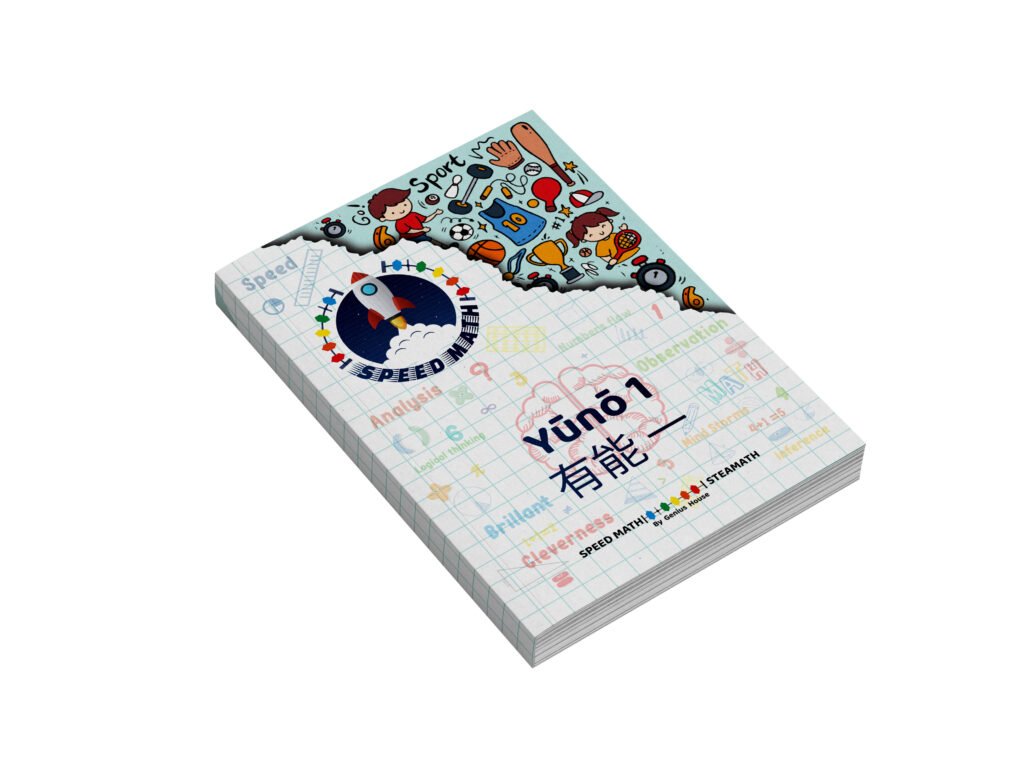
المستوى ٥ YŪNŌ II (الآت الموسيقى) (المستوى الانتقالي)
يتجسد التعاون بين الحساب الذهني والموسيقى في مهارة الموسيقي في حساب الإيقاعات والفواصل والتناغمات في الوقت الفعلي، مما يؤدي إلى الارتقاء بالعملية الإبداعية. يعمل هذا التآزر على زيادة الدقة في الأداء وتعميق العلاقة المعرفية بين التفكير الرياضي والتعبير الموسيقي. وفي إطار التفاعل المعقد بين الأرقام والنوتات الموسيقية، يظهر الحساب الذهني كحليف قيم للموسيقيين الذين يسعون جاهدين لتحقيق البراعة التحليلية والطلاقة الفنية.
يستطيع الطالب إنجاز ما يلي
- حل مشاكل الموسيقى باستخدام النوتات الموسيقية بشكل فعال في المواقف المختلفة.
- التعرف على البلدان المختلفة المتعلقة بمختلف أنماط الموسيقى والتركيبات
- التعرف على ١٦ آلة موسيقية، من الصغيرة إلى الكبيرة، وميزاتها الفريدة.
- تشغيل نغمات معقدة من خلال الجمع بين مهارات الرياضيات بسلاسة في العروض الموسيقية.

المستوى ٦ PURO I (دول العالم) – (الصف الخامس – مستوى البداية)
يركز التعاون على ١٦ دولة ومناطقها وخرائطها وعواصمها وأرقامها بـ ١٦ لغة مختلفة. يتم استكشاف الجوانب الجغرافية واللغوية للدول المتنوعة، ويعزز الفهم الشامل. إن دمج براعة الحسابات الذهنية مع الرؤى الثقافية والجغرافية يكشف عن جوانب مترابطة تحدد هذه البلدان عدديًا ومكانيًا.
يستطيع الطالب إنجاز ما يلي
- Acquiring knowledge of the Middle East map and the world.
- Familiarizing themselves with 16 different countries and languages, enabling the ability to count from 0 to 10 in each language.
- Memorizing the capitals of each country and understanding their respective measurements.
- Developing the skill to draw the flags of each country.
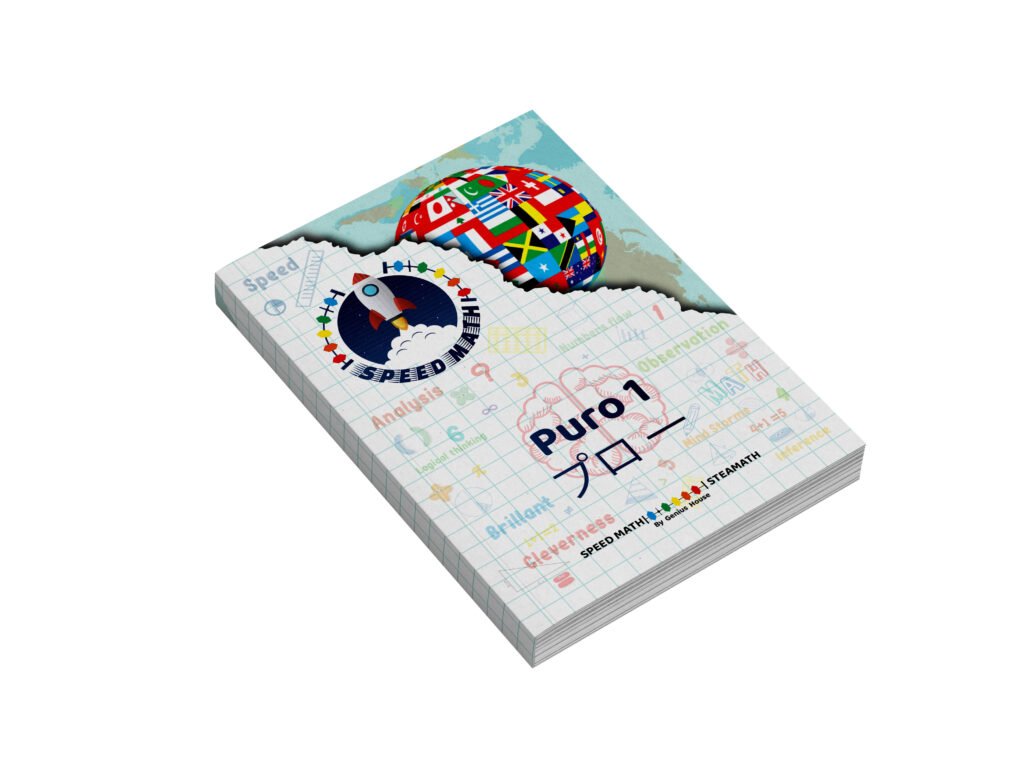
المستوى ٧ PURO II (جسم الإنسان) (المستوى الإنتقالي)
يتضمن دمج الحسابات الذهنية مع جسم الإنسان فحصًا شاملاً لمكوناته المختلفة، مع التأكيد على أهميتها وتعريفاتها الشكلية وتمثيلها العددي وطرق التحقيق والترددات التي تحدث بها هذه الوظائف الفسيولوجية
- Knowing 16 organs in the human body and their functions.
- Understanding how these organs work harmoniously for overall well-being.
- Calculating the number of cells, tissues, and neurons within the body’s structures.
- Determining the specific count of cells in each organ for detailed analysis.
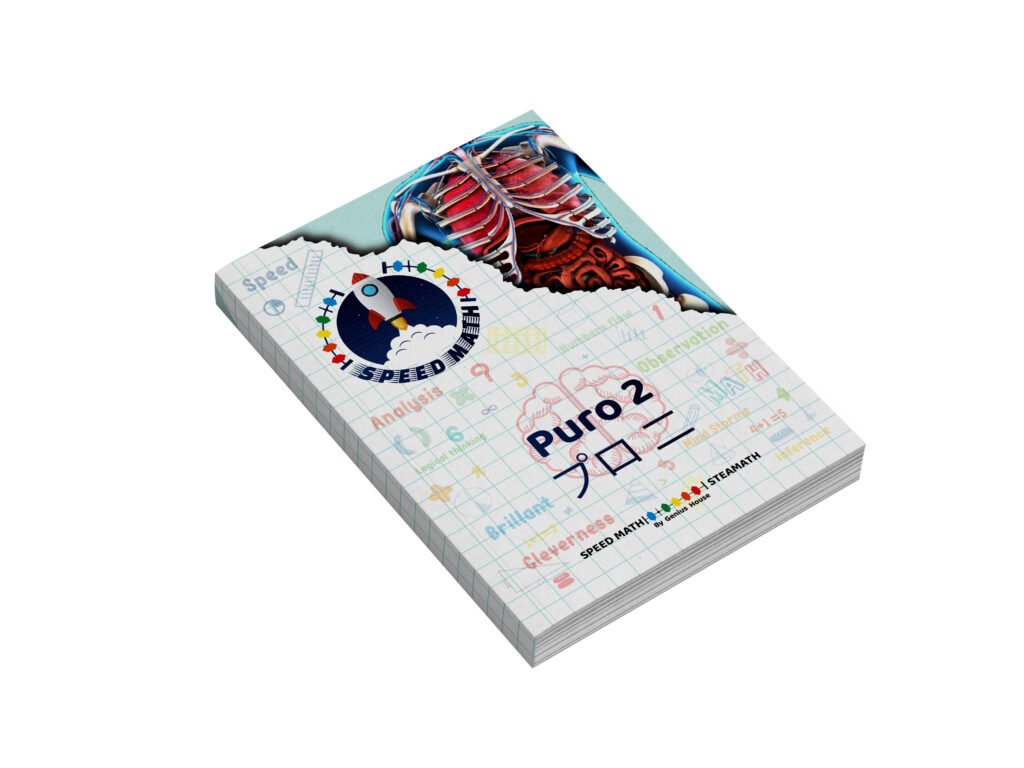
المستوى ٨ PURO III (إستكشاف الفضاء) (المستوى الإنتقالي)
The collaboration between mental math and the study of planets involves delving into the vast realm of celestial bodies within our solar system, such as planets and black holes. Through this exploration, students use calculations and precise measurements to unravel the mysteries of these astronomical entities, gaining a deeper understanding of their unique properties and behaviors.
يستطيع الطالب إنجاز ما يلي
- Recognize and name 16 diverse planets and galaxies, showcasing astronomical knowledge.
- Detail each celestial body with accurate labeling for a comprehensive astronomical understanding.
- Determine the precise location of each entity, measuring its distance from the sun.
- Record and analyze temperature data, enhancing comprehension of planetary climates.
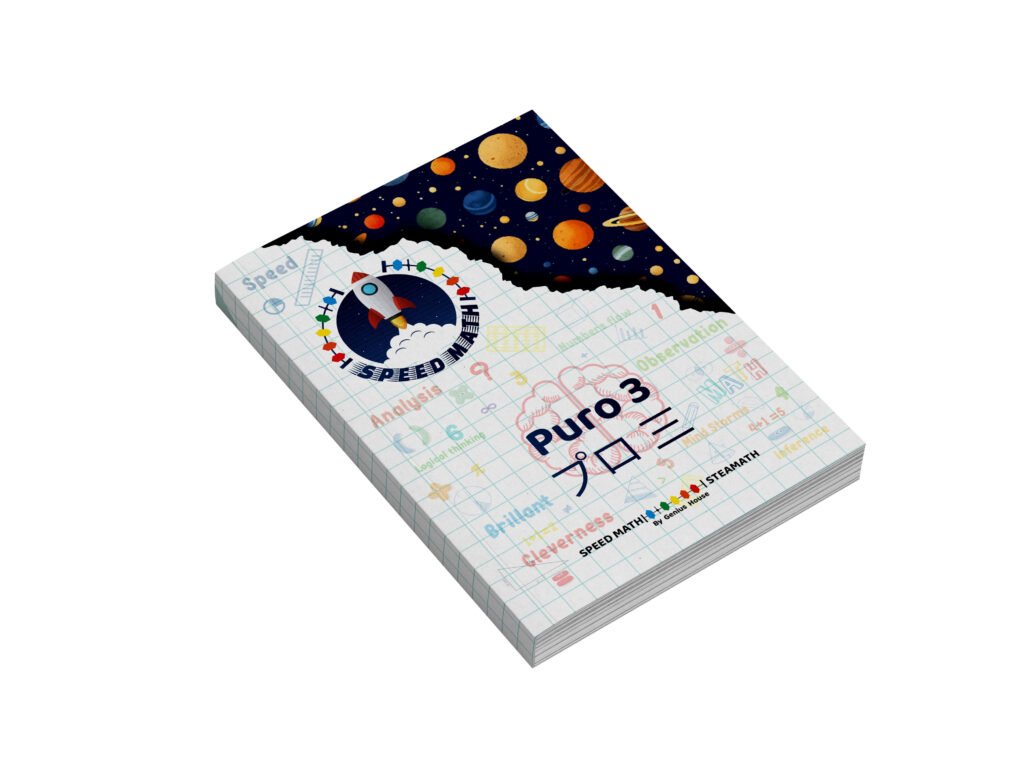
المستوى ٩ MASUTĀ I (الألعاب الذكية) (المستوى الإنتقالي)
Smart Games and Mental Math Integration is a smart way to boost thinking skills by adding math challenges to video games. By mixing math puzzles with strategic decision-making, this idea aims to make gaming more interesting and, at the same time, improve thinking and intelligence.
يستطيع الطالب إنجاز ما يلي
- Get to know 16 different fun games and learn how to play each one well.
- Improve problem-solving skills by solving math challenges in these games.
- Enhance strategic thinking and decision-making abilities by playing interactive and engaging games.
- Improve speed mental math skills by using math concepts in real-time games.
- Boost overall thinking abilities by taking part in activities that are both entertaining and educational.
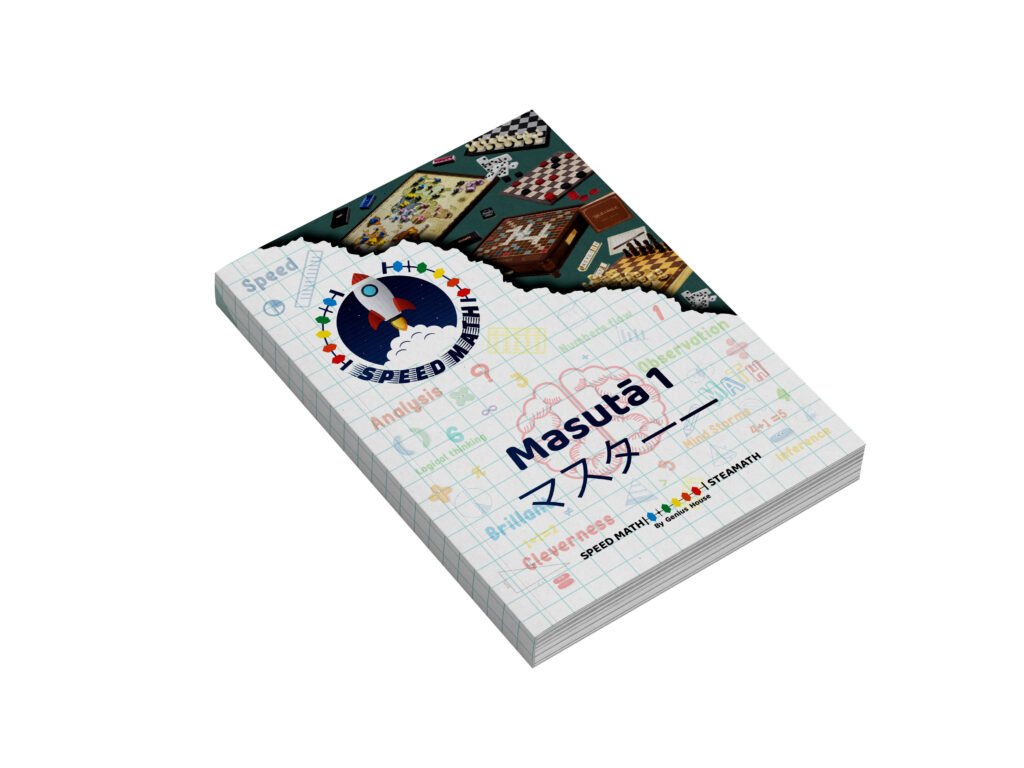
المستوى ١٠ MASUTĀ II (التفاعلات الكيميائية) (المستوى الإنتقالي)
The collaboration of Chemistry and Mental Math comes together as a teaching method that combines hands-on chemistry experiments with mental math exercises. This creative way of teaching encourages people to perform immediate calculations of important values, helping them understand chemical processes deeply and improve their fast math skills at the same time.
يستطيع الطالب إنجاز ما يلي
- Learn and do 16 basic chemistry reactions well, showing skill in different chemical changes.
- Show a good understanding of the basic principles and mechanisms that control these reactions, demonstrating a deep understanding of chemical processes.
- Use what they’ve learned to solve difficult problems and make smart choices in real-world lab situations, focusing on combining theoretical knowledge with hands-on experiments.
- Build important analytical skills to evaluate, fix, and improve reaction conditions, encouraging flexibility and resourcefulness in dealing with challenges in chemical experiments.

LEVEL 11 MASUTĀ III (ENERGY SOURCES) (Transition level)
Energy sources are vital to modern society and can be categorized into Traditional Energy, Fossil Fuels, Bio-Fuel, Renewable Energy, Atomic Power, and the Next Generation of Energy Sources. Combining mental math with the study of energy allows students to sharpen their calculation skills while gaining a deeper understanding of energy consumption, efficiency, and environmental impacts. This approach not only enhances scientific knowledge but also improves students’ ability to analyze data and make informed decisions regarding sustainable energy use and future solutions. The student can accomplish:
- Understand Energy Types: Learn about different energy sources, including fossil fuels, bio-fuels, renewable energy, atomic power, and emerging energy technologies.
- Perform Energy Assessment: Use mental math to calculate energy usage, cost efficiency, and the environmental impact of different energy sources.
- Evaluate Environmental Impact: Assess the environmental consequences of various energy sources and their role in climate change.

LEVEL 13 RĪDĀ 1 ( ARTIFICIAL INTELLIGENCE AI theme ) (Transition level)
The integration of Mental Math Challenges alongside Artificial
Intelligence introduces a pioneering method to enhance the
understanding of AI. It seamlessly incorporates mental math
challenges into coding and algorithmic exercises. This unique
initiative seeks to encourage participants to practice quick mental
calculations, promoting a mutually beneficial connection between
mathematical skills and the improvement of intelligent systems
through effective algorithmic design.
يستطيع الطالب إنجاز ما يلي
- Acquire a thorough understanding of 16 important real-world applications of Artificial Intelligence, covering areas such as healthcare, manufacturing, and transportation.
- Learn about robotics and smart automation.
- Develop practical skills in applying AI algorithms and models, showcasing coding proficiency and expertise in algorithmic design through practical projects.
- Develop practical skills in applying AI algorithms and models, showcasing coding proficiency and expertise in algorithmic design through practical projects.

LEVEL 13 RĪDĀ II ( INVENTORS theme ) (Transition level)
المخترعون هم مبدعون ذوو رؤية ثاقبة يدفعون الاستكشاف من خلال دمج تحديات الرياضيات الذهنية في دراساتهم وابتكاراتهم. وهذا يعزز فهمًا أعمق للتطبيقات الرياضية في الهندسة والتكنولوجيا والاقتصاد، مما يعزز مهارات المشاركين في حل المشكلات وإلهامهم للتطلع إلى أن يصبحوا مخترعين مثاليين بينما يتعلمون عن ١٦ مبتكرًا مختلفًا.
يستطيع الطالب إنجاز ما يلي
- تطوير مهارات حل المشكلات بكفاءة من خلال الانخراط في تحديات الرياضيات الذهنية.
- اكتساب فهم شامل لـ ١٦ مخترعًا مختلفًا ومساهماتهم.
- إنشاء أساس قوي في التطبيقات الرياضية ذات الصلة بالهندسة والتكنولوجيا.
- إلهام الطموح ليصبح مخترعًا مثاليًا من خلال الاحتفال بالإنجازات الرائدة والتعلم منها.
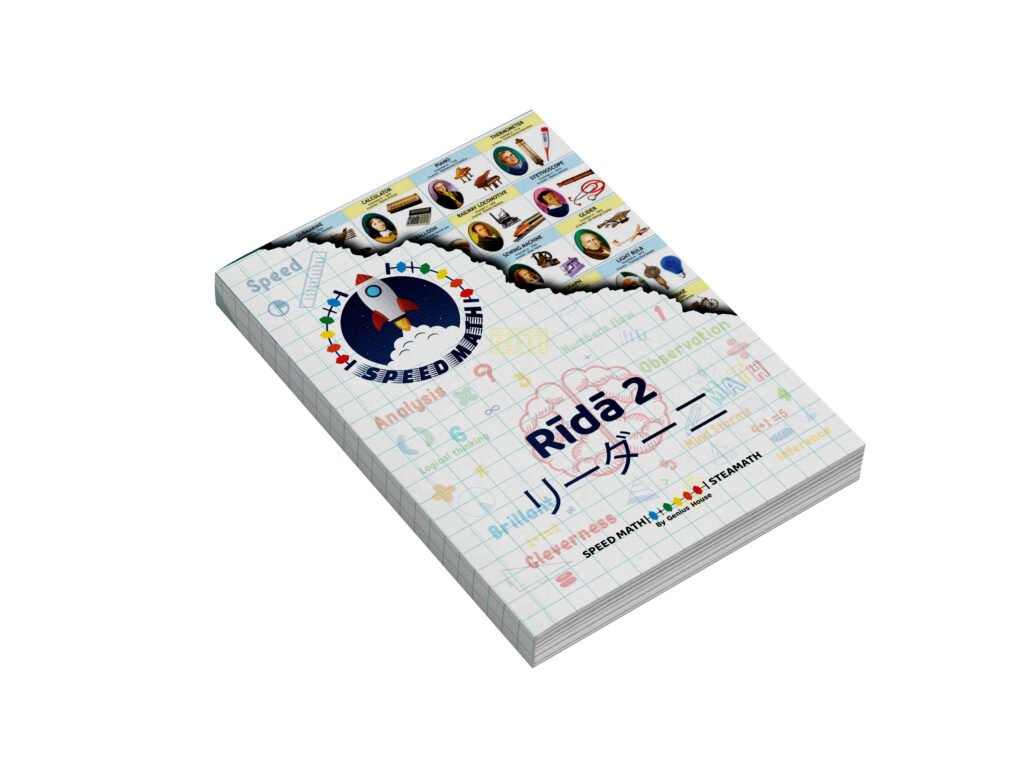
LEVEL 14 RĪDĀ III ( UNIVERSITY MAJORS theme ) (Transition level)
University majors offer a variety of disciplines, such as business,
sciences, healthcare, and technology, each providing unique skills
and knowledge for various career paths. Students can enhance their
problem-solving abilities and analytical thinking by applying theoretical
knowledge to real-world situations and engaging in critical discussions.
Combining mental math with these fields helps improve decision-making
and critical thinking skills, especially in areas where calculations and data
interpretation are essential for success, such as research, healthcare,
and technical professions
يستطيع الطالب إنجاز ما يلي
- Understand Various Majors: Gain insight into different university majors, including business, sciences, healthcare, and technology.
- اكتساب فهم شامل لـ ١٦ مخترعًا مختلفًا ومساهماتهم.
- Improve Problem-Solving: Enhance their problem-solving abilities and analytical thinking through real-world applications of theoretical knowledge.
- Use Several Analyses: Apply various analytical techniques across different fields, such as data analysis in business, statistical analysis in sciences, or clinical analysis in healthcare.
- Conduct In-Depth Analysis: Develop the ability to conduct thorough analyses of
complex issues, considering multiple perspectives and data sources, to make informed
decisions in various professional fields.

